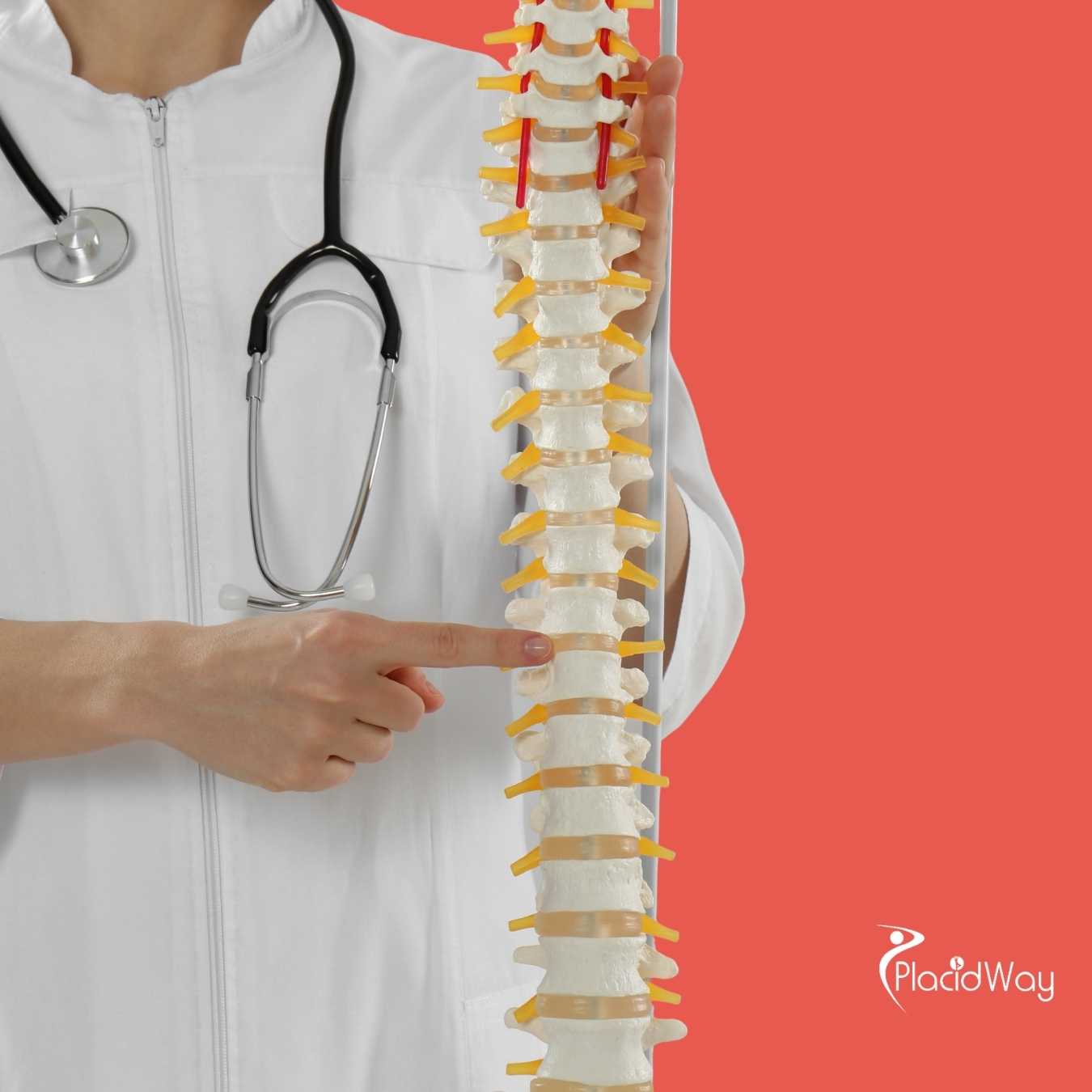Stem Cell Therapy for Developmental Delay: How It Works and What to Expect
.png)
Navigating the journey of a child with a developmental delay can be filled with questions and the search for effective interventions. Many families are increasingly exploring advanced therapeutic options, and among these, stem cell treatment for developmental delay has garnered significant attention. This innovative approach seeks to leverage the body's own regenerative capabilities to address underlying issues contributing to developmental challenges, offering a potential avenue for improvement where traditional therapies might have limitations.
At its core, stem cell treatment for conditions like developmental delay involves introducing highly versatile cells into the body. These cells have the unique ability to differentiate into various cell types, replace damaged cells, or promote healing and regeneration. The goal is to improve neurological function, enhance brain connectivity, and ultimately support a child's developmental milestones. While still largely considered experimental for many developmental conditions, understanding what this treatment entails, its potential mechanisms, and the factors to consider is crucial for families exploring all available options.
What is stem cell treatment for developmental delay?
Stem cell treatment for developmental delay refers to a broad category of therapies that utilize various types of stem cells to address the underlying causes or symptoms of a child's developmental challenges. Developmental delays can manifest in many ways, affecting motor skills, speech, cognition, and social interaction. The rationale behind using stem cells is their unique ability to regenerate, differentiate into specialized cells (like neurons), modulate the immune system, and release growth factors that can support tissue repair and new cell growth.
When administered, these cells are theorized to migrate to areas of injury or dysfunction within the brain or central nervous system. Once there, they may contribute to repairing damaged neural pathways, reducing inflammation, improving blood flow, and creating a more favorable environment for existing neurons to function better. This complex interplay aims to enhance neurological connectivity and plasticity, which are critical for learning, motor control, and cognitive development. It's important to understand that this treatment is still in various stages of research and is not a universally accepted cure, but rather a promising area of exploration for conditions that cause developmental delays.
How do stem cells work to address developmental delays?
The therapeutic potential of stem cells in addressing developmental delays lies in their multifaceted actions within the body, particularly in the central nervous system. These cells don't just replace damaged cells; they actively participate in creating a regenerative environment. Here's how they are believed to work:
- Immunomodulation: Many developmental delays, especially those linked to perinatal injuries or genetic conditions, can involve chronic inflammation or immune system dysregulation. Stem cells, particularly mesenchymal stem cells (MSCs), have potent immunomodulatory properties, meaning they can help calm excessive inflammatory responses and bring the immune system into balance.
- Trophic Factor Secretion: Stem cells release a variety of growth factors, cytokines, and chemokines. These "trophic factors" act as signaling molecules that can stimulate the survival, growth, and differentiation of existing cells, promote the formation of new blood vessels (angiogenesis), and support the health of neurons. This can enhance neural plasticity and repair.
- Differentiation and Replacement: In some cases, especially with neuronal damage, stem cells have the capacity to differentiate into specialized neural cells, such as neurons or glial cells, potentially replacing those that are lost or damaged. This direct replacement mechanism is a key goal in repairing neurological deficits associated with developmental delays.
- Improved Connectivity: By reducing inflammation, supporting cell health, and potentially regenerating cells, stem cell therapy aims to improve the intricate network of connections within the brain. Enhanced connectivity is vital for cognitive function, motor control, and sensory processing, all of which are often affected in children with developmental delays.
These mechanisms collectively aim to improve the brain's ability to process information, coordinate movements, and develop new skills, thereby helping children with developmental delays achieve their milestones.
Which specific conditions causing developmental delay are targeted by stem cell therapy?
While stem cell therapy is still considered experimental for many conditions, research and clinical trials are exploring its application across a spectrum of disorders that lead to developmental delay. The specific conditions most often targeted or studied include:
- Cerebral Palsy (CP): This is one of the most widely studied areas for stem cell treatment. CP results from brain injury or abnormal brain development, often leading to motor delays. Stem cells aim to repair damaged brain tissue, reduce inflammation, and promote neuroplasticity, potentially improving motor function, spasticity, and cognitive abilities.
- Autism Spectrum Disorder (ASD): While the exact mechanisms are still being researched, some studies suggest that stem cells may help modulate inflammation, improve cerebral blood flow, and repair neuronal connections, which could potentially alleviate some symptoms associated with ASD, such as communication and social interaction challenges.
- Hypoxic-Ischemic Encephalopathy (HIE): This condition, caused by oxygen deprivation to the brain, often leads to severe developmental delays. Stem cells are being explored for their neuroprotective and regenerative properties to mitigate brain damage and improve neurological outcomes after HIE.
- Genetic and Metabolic Disorders: For certain rare genetic or metabolic conditions that impact brain development and function, stem cell therapy is being investigated to correct underlying cellular deficiencies or support damaged neural systems.
- Global Developmental Delay (GDD) of Unknown Origin: In cases where the specific cause of delay is not identified, stem cells are explored as a broad regenerative therapy to enhance overall brain health and function.
It's crucial to note that the effectiveness varies, and ongoing research is essential to fully understand the scope and limitations of stem cell treatment for each of these conditions causing developmental delay.
What are the types of stem cells used in treating developmental delays?
Several types of stem cells are currently used or being investigated in the context of treating developmental delays, each with its unique characteristics and advantages. The choice of stem cell type often depends on the specific condition being addressed, the research protocols, and the availability. The most common types include:
- Mesenchymal Stem Cells (MSCs): These are multipotent stromal cells that can differentiate into a variety of cell types, including bone, cartilage, muscle, and fat cells. More importantly for neurological conditions, MSCs are known for their strong immunomodulatory, anti-inflammatory, and neurotrophic properties. They can be sourced from:
- Umbilical Cord Tissue: This is a rich and easily accessible source of young, potent MSCs, often preferred due to their low immunogenicity (less likely to cause immune rejection).
- Adipose (Fat) Tissue: MSCs can be harvested from a patient's own fat, making it an autologous (patient's own cells) source, which eliminates rejection risks.
- Bone Marrow: Another autologous source, bone marrow contains MSCs that have been extensively studied for their regenerative potential.
- Hematopoietic Stem Cells (HSCs): These are blood-forming stem cells primarily found in bone marrow and umbilical cord blood. While their main role is to form blood cells, HSCs from cord blood also contain a small population of primitive stem cells with neuroregenerative potential and anti-inflammatory effects. They are often used in therapies where immunomodulation and general tissue support are desired.
The choice between these stem cell types can influence the treatment approach and the potential outcomes for children with developmental delays.
What does the procedure for stem cell treatment for developmental delay involve?
The process of receiving stem cell treatment for developmental delay is a multi-step procedure that generally follows a carefully planned protocol. While variations exist based on the clinic, the type of stem cells used, and the child's specific condition, the core steps are usually consistent:
- Initial Consultation and Evaluation: This involves a thorough medical review of the child's history, current developmental status, and diagnostic tests (e.g., MRI, EEG) to determine suitability for the treatment and to create a personalized treatment plan.
- Stem Cell Sourcing:
- If using autologous cells (from the child themselves), this might involve a small surgical procedure to collect bone marrow or adipose tissue.
- If using allogeneic cells (from a donor, like umbilical cord tissue), the cells are sourced from a reputable stem cell bank.
- Cell Processing and Preparation: The collected stem cells are then transported to a specialized laboratory where they are processed, isolated, expanded (if necessary to achieve a therapeutic dose), and rigorously tested for purity, viability, and safety.
- Administration: The prepared stem cells are administered to the child using one or more methods:
- Intravenous (IV) Infusion: This is the most common and least invasive method, similar to a blood transfusion. The cells circulate throughout the body, including the brain.
- Lumbar Puncture (Intrathecal Injection): This involves injecting cells directly into the cerebrospinal fluid in the spinal canal, allowing for direct access to the central nervous system.
- Direct Injection: In some cases, and often for specific focal injuries, cells might be injected directly into a targeted area, though this is less common for diffuse developmental delays.
- Post-Treatment Monitoring and Rehabilitation: After the infusions, the child is closely monitored. Families are often advised to continue with existing rehabilitation therapies (physical, occupational, speech) as these are crucial for maximizing the potential benefits of the stem cell treatment.
Multiple sessions might be required over a period, depending on the treatment protocol designed for the child's specific needs.
What are the potential benefits of stem cell treatment for developmental delay?
Families exploring stem cell treatment for developmental delay are often seeking improvements in various aspects of their child's development. While outcomes can vary widely and are not guaranteed, the potential benefits observed in some research studies and clinical reports include:
- Improved Motor Skills: Children with motor delays, such as those with cerebral palsy, may show enhanced muscle tone, reduced spasticity, better coordination, and improved gross and fine motor skills, leading to greater mobility and independence.
- Enhanced Cognitive Function: Some children may experience improvements in attention span, memory, learning abilities, and problem-solving skills, which are vital for academic and daily life functions.
- Better Speech and Communication: For children with speech and language delays, there might be improvements in verbal expression, articulation, understanding language, and overall communication skills.
- Improved Social Interaction: In conditions like autism spectrum disorder, stem cell therapy has been explored for its potential to enhance social engagement, reduce repetitive behaviors, and improve reciprocal communication.
- Reduced Inflammation and Pain: The anti-inflammatory properties of certain stem cells can lead to a reduction in chronic inflammation within the central nervous system, which may contribute to overall well-being and reduced pain in some children.
- Overall Quality of Life: Any combination of these improvements can significantly enhance a child's participation in daily activities, leading to a better quality of life for both the child and their family.
It is important for families to have realistic expectations and understand that these benefits are potential and not guaranteed, as stem cell treatment for developmental delay remains an evolving field.
Are there risks or side effects of stem cell therapy for developmental delays?
Like any medical procedure, stem cell therapy for developmental delays carries potential risks and side effects that families should be aware of and discuss thoroughly with medical professionals. While many clinics offering these treatments report a high safety profile, understanding the possible complications is crucial:
- Infection: Any procedure involving injections or infusions carries a risk of infection at the administration site or, in rare cases, systemic infection. Reputable clinics follow stringent sterilization protocols to minimize this risk.
- Allergic Reaction or Immune Rejection: While MSCs and cord blood stem cells have low immunogenicity, there's always a slight chance of an allergic reaction or, with allogeneic (donor) cells, a mild immune response. Careful screening and matching can reduce this risk.
- Tumor Formation: This is a theoretical risk, particularly with certain types of embryonic or induced pluripotent stem cells, due to their uncontrolled growth potential. However, with the types of adult or perinatal stem cells commonly used for developmental delays (like MSCs from umbilical cord), the risk of tumor formation is considered extremely low, especially when processed and administered correctly.
- Complications from Administration:
- IV Infusion: Generally safe, but can have minor risks like bruising or pain at the injection site.
- Lumbar Puncture (Intrathecal): Carries risks such as headache, temporary back pain, or, very rarely, infection or nerve damage.
- Lack of Efficacy: The most common "side effect" might be that the treatment does not yield the desired improvements, leading to disappointment and significant financial cost without a corresponding benefit.
Choosing a clinic with extensive experience, proper accreditation, and transparent communication about risks is paramount to ensure the highest safety standards for stem cell treatment for developmental delays.
Is stem cell treatment for developmental delay an approved therapy in all countries?
The regulatory landscape for stem cell treatment for developmental delay varies significantly across different countries, leading to confusion for many families. It is essential to understand that this treatment is not universally approved or recognized as a standard medical therapy, particularly in major Western countries like the United States, Canada, and most of Europe.
In the United States, the Food and Drug Administration (FDA) generally considers unapproved stem cell therapies as drugs that require rigorous clinical trials to prove their safety and efficacy before they can be marketed. While some specific stem cell products are approved for certain uses (e.g., hematopoietic stem cell transplantation for blood disorders), stem cell treatment for developmental delay typically falls outside of these approved indications. Therefore, in the U.S., these treatments are primarily available within the strict confines of registered clinical trials.
Conversely, some countries have more permissive regulations or different legal frameworks regarding experimental therapies. Countries such as Mexico, Panama, Germany, Thailand, and others have clinics that offer stem cell treatment for developmental delay. These clinics may operate under local regulations that allow for compassionate use, expanded access, or specific local approvals for investigational treatments. It's crucial for families to thoroughly research the regulatory environment of any country or clinic they are considering, as the absence of strict oversight can sometimes lead to questionable practices or unproven claims. Understanding the legal and ethical considerations is a key part of making an informed decision about stem cell treatment for developmental delay.
Why consider seeking stem cell treatment for developmental delay abroad, and what are the benefits?
For many families, the decision to seek stem cell treatment for developmental delay abroad, often referred to as medical tourism, is driven by a combination of factors. The primary reasons often revolve around access and cost, especially when such treatments are not readily available or approved in their home countries.
Key benefits and reasons for looking abroad include:
- Access to Treatment: As discussed, many advanced economies have strict regulations, limiting stem cell treatment for developmental delay to clinical trials. Abroad, particularly in countries like Mexico, Panama, or certain Asian nations, clinics may offer these therapies under different regulatory frameworks, providing options not available domestically.
- Cost-Effectiveness: The cost of stem cell therapy, if available in approved clinical trials or private settings in Western countries, can be prohibitively high. International clinics often offer similar treatments at a significantly lower price point, making them more accessible to a wider range of families.
- Specialized Expertise: Some international clinics have developed significant expertise and experience in administering stem cell treatment for developmental delay, having treated a large number of patients with various conditions. This specialization can be appealing to families looking for practitioners with extensive experience in this emerging field.
- Reduced Waiting Times: In countries where such treatments are highly regulated or available only through trials, waiting lists can be long. Overseas, access to treatment can often be much quicker, which is a critical factor for conditions where early intervention is often desired.
- Comprehensive Care Packages: Many international medical tourism providers offer comprehensive packages that include treatment, accommodation, travel logistics, and sometimes even rehabilitation services, simplifying the process for families.
While the benefits of seeking treatment abroad are compelling, it also necessitates thorough research and due diligence to ensure the chosen clinic is reputable, safe, and transparent about their procedures and expected outcomes for stem cell treatment for developmental delay.
What is the average cost of stem cell treatment for developmental delay in international clinics?
The cost of stem cell treatment for developmental delay can vary widely depending on several factors, particularly when considering international options. There isn't a single fixed price, as clinics, protocols, and included services differ. However, families can generally expect the cost for a full treatment course to fall within a broad range.
Factors influencing the cost include:
- Clinic Reputation and Location: Renowned clinics in countries with higher operating costs (e.g., Germany) might charge more than clinics in regions like Mexico or Thailand.
- Type and Source of Stem Cells: Treatments using a patient's own cells (autologous) might have different costs than those using donor cells (allogeneic), especially if cells need to be expanded. The type of cell (e.g., umbilical cord MSCs vs. bone marrow MSCs) also plays a role.
- Number of Cells and Doses: The quantity of stem cells administered and the number of treatment sessions or cycles required will directly impact the overall cost. More severe conditions might necessitate a more intensive protocol.
- Included Services: Some clinics offer all-inclusive packages that cover not only the stem cell treatment itself but also initial consultations, diagnostic tests, follow-up care, accommodation, airport transfers, and sometimes even rehabilitation services. Other clinics might quote only the treatment, with additional services costing extra.
- Duration of Stay: Longer stays for multiple treatment cycles or extensive post-treatment rehabilitation will naturally increase the overall expenses, including lodging and living costs.
It is essential for families to request a detailed breakdown of all costs from prospective international clinics. This transparency ensures that they understand exactly what is included in the quoted price for stem cell treatment for developmental delay and can budget accordingly, considering travel and living expenses alongside medical fees.
How can families choose a safe and effective clinic for stem cell treatment for developmental delay overseas?
Selecting the right clinic for stem cell treatment for developmental delay abroad is perhaps the most critical decision a family will make. Given the experimental nature of these therapies and the varying regulatory environments, thorough due diligence is essential. Here are key considerations for choosing a safe and effective clinic:
- Accreditation and Regulatory Compliance:
- Look for clinics that are accredited by recognized international bodies (e.g., Joint Commission International - JCI) or operate under strict national medical regulations.
- Verify their licensing and ensure they comply with local laws regarding stem cell therapies.
- Physician Qualifications and Experience:
- Research the credentials and experience of the doctors and medical team. Are they board-certified in relevant specialties (e.g., neurology, pediatrics)?
- Do they have specific experience in treating children with developmental delays using stem cells?
- Treatment Protocols and Cell Sourcing:
- Inquire about the specific types of stem cells used (e.g., umbilical cord MSCs, adipose-derived MSCs).
- Ask about their cell processing standards – do they use a certified lab (e.g., GMP-certified)? How do they ensure cell purity, viability, and sterility?
- Understand the administration methods and the rationale behind their protocol for developmental delays.
- Transparency and Ethics:
- A reputable clinic will be transparent about the potential benefits, realistic outcomes, and all known risks and side effects of stem cell treatment for developmental delay.
- They should provide clear, written information about the treatment plan, costs, and follow-up care.
- Patient Testimonials and Support:
- Seek out verifiable patient testimonials or connections to families who have undergone treatment at the clinic.
- Assess the level of patient support offered, including pre-treatment consultations, during-treatment care, and post-treatment follow-up.
- Medical Tourism Facilitators: Consider working with a reputable medical tourism facilitator like PlacidWay. They specialize in vetting international clinics, arranging travel and logistics, and providing unbiased information, helping families make informed decisions about stem cell treatment for developmental delay.
By carefully evaluating these aspects, families can significantly increase their chances of finding a safe and effective clinic for their child's stem cell treatment for developmental delay journey.
For families exploring advanced healthcare solutions globally, including stem cell treatment for developmental delay, PlacidWay offers comprehensive resources and assistance. Connect with us to discover reputable clinics, understand treatment options, and streamline your medical travel plans, ensuring you find the right care for your loved one.


.png)









Share this listing